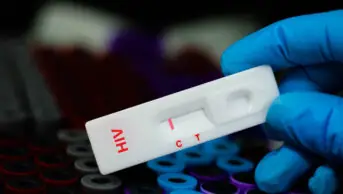A letter from Bill Gerber, published in The Pharmaceutical Journal in December 2017, which assessed gene therapy Strimvelis (indicated for a rare form of severe combined immunodeficiency [SCID]), is misleading and risks sowing confusion among patients living with common variable immunodeficiency (CVID), as well as their caregivers.
Both diseases belong to a group of primary immunodeficiency diseases (PID) caused by impairment of the immune system, but they differ in their underlying cause at the molecular level, as well as clinically and pathologically. The rare form of SCID, which affects approximately 1 in 200,000 live births, results from a genetic abnormality owing to the malfunction of the adenosine deaminase enzyme (ADA-SCID). It accounts for 10–20% of all cases of SCID, and is one of more than 300 single-gene-implicated PIDs[1]
,[2]
. The disease makes children vulnerable to infections and can cause premature death within the first year of life if left undiagnosed and untreated.
In its guidance, the National Institute for Health and Care Excellence (NICE) recommended Strimvelis, within its marketing authorisation, to be used as a treatment option for ADA-SCID “when no suitable human leukocyte antigen-matched related stem cell donor is available[3]
”.
The author unjustifiably and misleadingly translates the NICE recommendation to CVID, the most frequent form of PID. CVID, characterised by marked decrease of immunoglobulin (IgG), affects approximately 1 in 25,000 individuals worldwide[4]
. In the majority of affected individuals, the cause is unknown. Only 2–10% of CVID cases occur as a result of a genetic abnormality[5]
. While ADA-SCID can be detected by screening at birth, the diagnosis of CVID cannot be established earlier than four years of age[6]
.
It is puzzling how “superior Strimvelis outcomes” — being investigated for treatment of only one rare form of SCID – represents a “paradigm shift in timely CVID diagnosis and identification of the root cause”. It is also highly questionable how this “should be fertile ground for a revolutionary age of gene therapy solutions for CVID”. The symptoms of ADA-SCID and CVID overlap, but are distinct in their severity and progression; the diseases have different treatment options.
IgG replacement therapy is currently the only treatment available for individuals living with CVID. The manufacturers of IgG from human plasma have worked for decades with patients, patient advocacy groups, regulators, physicians, pharmacists and scientists toward a shared goal of providing affected individuals with safe and efficacious products, and ensuring access to a wide variety of products tailored to individual patient needs, based on tolerability, dose, administration setting, infusion rate and route (intravenous, subcutaneous or intramuscular).
The author’s assertion that “the days of lifetime [intravenous] IgG infusions for CVID should be numbered” is based on an incorrect understanding of the complexity, uniqueness, and variability of PID forms. The letter risks encouraging false expectations among patients and their families, and neglects the commitment of all stakeholders involved.
Larisa Cervenakova,
Medical director, Plasma Protein Therapeutics Association, Maryland, United States
References
[1] Whitmore KV & Gaspar HB. Adenosine deaminase deficiency — more than just an immunodeficiency. Front Immunol 2016;7:314. doi: 10.3389/fimmu.2016.00314
[2] Bousfiha A, Jeddane L, Picard C et al. The 2017 IUIS Phenotypic Classification for Primary Immunodeficiencies. J Clin Immunol 2018;38(1):129–143. doi: 10.1007/s10875-017-0465-8
[3] National Institute for Health and Care Excellence. Strimvelis for treating severe combined immunodeficiency caused by adenosine deaminase deficiency [ID926]. Available at: www.nice.org.uk/guidance/indevelopment/gid-hst10005 (accessed January 2018)
[4] Bonilla FA, Barlan I, Chapel H et al. International Consensus Document (ICON): common variable immunodeficiency disorders. J Allergy Clin Immunol Pract 2016;4(1):38–59. doi: 10.1016/j.jaip.2015.07.025
[5] Bogaert DJ, Dullaers M, Lambrecht BN et al. Genes associated with common variable immunodeficiency: one diagnosis to rule them all? J Med Genet 2016;53(9):575–590. doi: 10.1136/jmedgenet-2015-103690
[6] Thakar MS, Hintermeyer MK, Gries MG et al. A practical approach to newborn screening for severe combined immunodeficiency using the T cell receptor excision circle assay. Front Immunol 2017;8:1470. doi: 10.3389/fimmu.2017.01470

